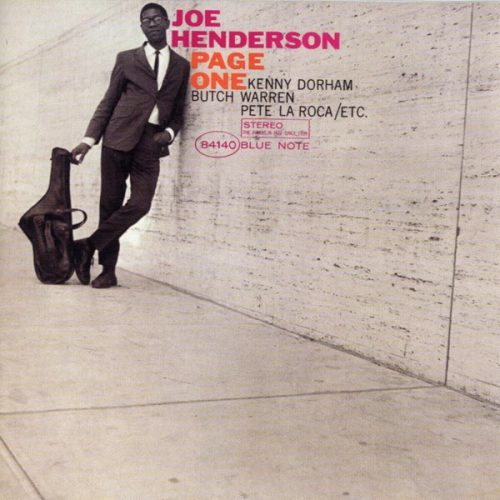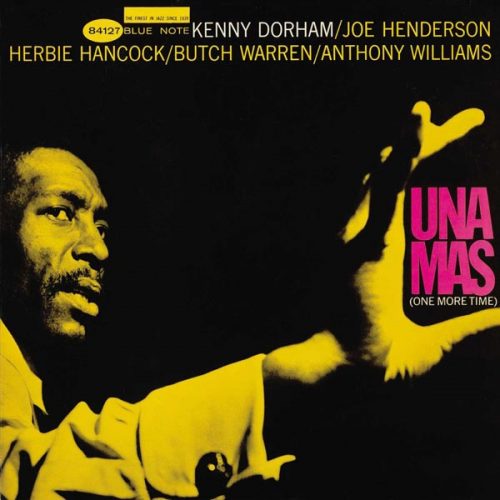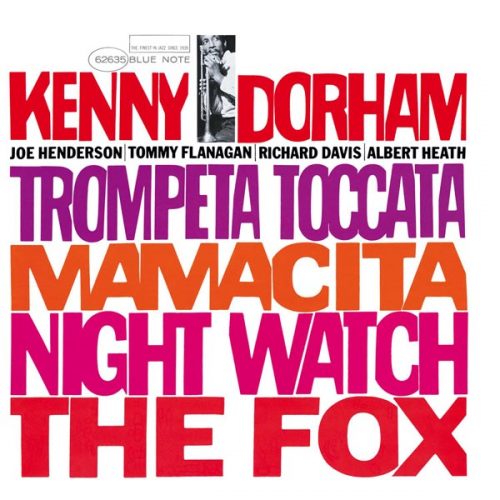February 8, 2021
Kenny Dorham was a multi-gifted man, and Page One—the 1963 debut by Joe Henderson—displays several of his gifts. His eloquence on the trumpet, which has finally received some of the respect it deserved in recent years, can be heard on each of the six tracks. Dorham was also a brilliant composer as well as one of the very best at orchestrating melodies for a small group, and helped write the book for modern combo arranging as an original Jazz Messenger. His music writing is represented on Page One by the immortal “Blue Bossa” and the haunting short-form ballad “La Mesha.” As a prose writer, Dorham reviewed records briefly for DownBeat, which also published an excerpt from his unfinished autobiography. The original liner notes for Page One are Dorham’s, and they add to our feeling for his warmth, wit and intelligence.
Then there is Kenny Dorham the talent scout, who encouraged and championed an untold number of young musicians in his three decades on the jazz scene. He introduced Butch Warren to New York audiences, and could make the same claim for two of the bassist’s mates in the 1960 Dorham quintet, Charles Davis and Steve Kuhn. Herbie Hancock and Tony Williams partnered up on a Dorham recording session, Una Mas from April 1963, several weeks before their more fateful union in the Miles Davis quintet.
And no musician benefitted more clearly or deservedly from Dorham’s coat-pulling efforts than Henderson, who made his Blue Note debut on Una Mas, then found himself back at Rudy Van Gelder’s studio with Alfred Lion in the booth for Grant Green’s Am I Blue? in May before cutting Page One, Henderson’s own bow as a leader. The results Henderson achieved here were so impressive, and the resulting need to highlight this then-unknown tenor saxophonist so compelling, that Page One was issued prior to Dorham’s date. So, it was actually the second of what would ultimately be five classic Henderson/Dorham quintet albums, recorded for Blue Note over a 17-month period and issued under one or the other’s name. (The pair were also part of the Andrew Hill sextet that cut the equally classic Point of Departure in March 1964)
One aspect of the Dorham/Henderson discography that is especially fascinating is the way in which they assembled distinctive rhythm sections for each album. While no two of the five dates features the identical supporting cast, four musicians (the three heard here plus Richard Davis) appear twice. Warren was also on Una Mas, La Roca returned for Henderson’s Our Thing, and Tyner made the Henderson date In ‘N Out. These players were not so much interchangeable as extremely compatible, creating a distinctive foundation for the music determined by the collective sound and sense of time generated by each specific trio.
The unit on Page One sounds especially relaxed and offers a warm and more intimate slant on innovations that Tyner was busy uncovering as a member of the John Coltrane quartet. After appearing on three Freddie Hubbard Blue Note albums in 1960 and ’61, Tyner had signed a contract with Impulse! (Coltrane’s label), which explains the listing of four musicians and “Etc.” on the front cover. This first reappearance of Blue Note was the start of a slow but sure move back into the Lion orbit that led Tyner to more important sideman work with Henderson, Wayne Shorter and several others, and ultimately to his own recording contract and the similarly timeless The Real McCoy (with Henderson on tenor) in 1967.













